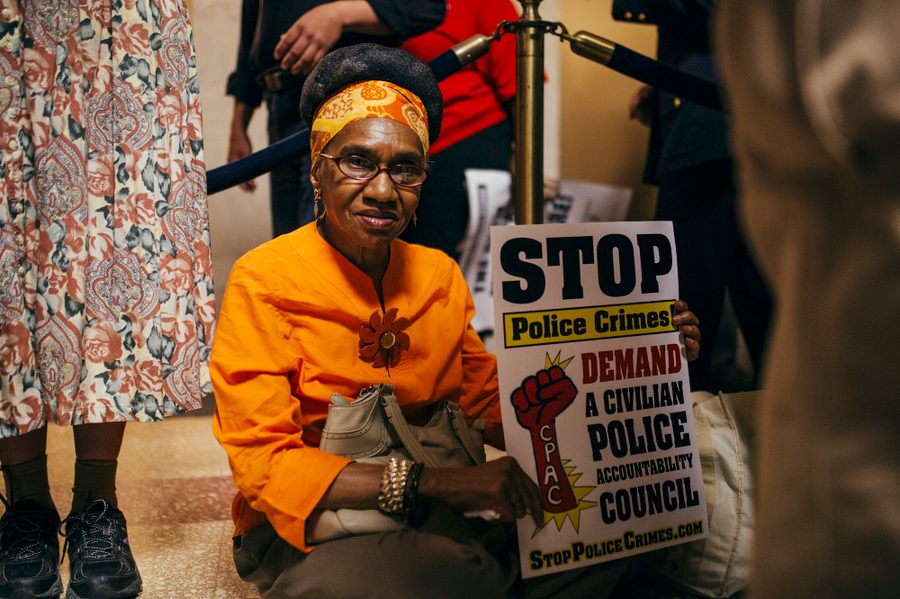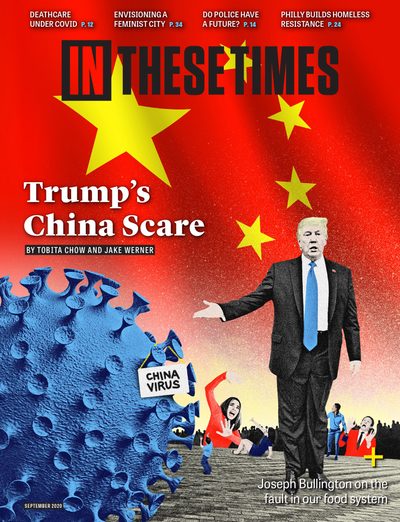To Transform Policing, We Need Community Control
An elected civilian council could crack down on police abuses, and pave the way for longer-term transformations.
Jazmine Salas

American cities are at a crossroads. We can continue to live under the brutal threat of police violence, or we can take back our communities. To break the chains of abuse, we need community control of the police: the power to determine what policing looks like in our neighborhoods — who does the policing and how.
Specifically, community control means a democratically elected civilian council that would give residents final authority on police policies and budgets, disciplinary actions and legal recourse, along with hiring and firing power over all police, including the superintendent. Such a council would be able to intervene immediately to reduce many police abuses. It would also serve as a fundamental first step toward longer-term transformation of law enforcement. It would empower the people who suffer the most under police impunity — Black, Latinx, Indigenous and other oppressed communities. And now is the time to fight for it.
We are in the midst of a historic uprising. Millions around the nation have poured into the streets since late May, spurred to action by the horrendous murders of George Floyd, Breonna Taylor and Ahmaud Arbery. The movement has exploded in Chicago, where I live, with protests and car caravans led by, among others, Black Lives Matter Chicago and the Chicago Alliance Against Racist and Political Repression (which I co-chair), drawing thousands and shutting down major roads and downtown Chicago. Among their demands, these organizations are pushing for an all-elected Civilian Police Accountability Council (CPAC).
The movement is thriving, with more than 60,000 petition signers. Nineteen aldermen — several of whom unseated anti-CPAC incumbents in 2019 — support CPAC legislation; 26 are needed for a simple majority on the Chicago City Council. Chicago isn’t alone: Cities like Minneapolis, Jacksonville, Fla., and Dallas are also demanding community control of police. Many Black and brown communities are crying for justice after living under brutal police occupation. We see our struggles reflected in the movement that has escalated in Minneapolis.
Chicago, like many U.S. cities, has never had a police accountability structure that delivers justice to the survivors of police crimes. Under our current system, the police officers who have at least 10 complaints against them are responsible for 64 percent of all complaints against the police. Even with a proven record of abuse, police officers are allowed to patrol the same communities they’ve harmed. Jason Van Dyke, the Chicago police officer who shot 17-year old Laquan McDonald 16 times in 2014, held 20 citizen complaints at the time of the murder, none of which resulted in significant discipline. This same “blue wall of silence” allowed Commander Jon Burge and his rogue Midnight Crew to torture more than 100 predominantly Black men over nearly two decades until a whistleblower finally came forward. Community control boards would have the power to investigate all allegations of torture and misconduct and act as the final authority on all disciplinary actions against police officers, from termination to seeking criminal indictments. Removing these cops from the force would mark a tangible improvement in the lives of Black and brown people in the city.
Community control is about exercising our fundamental democratic right not just to have a seat at the table, but to put the police under our oversight. Every action, policy and budget must be subject to the will of the people, allowing for everything from changes to police department practices to reductions in police spending. On their own, corrupt police departments and complicit city councils are unlikely to deliver on movement demands to defund, demilitarize or abolish police, but members of community control councils would be accountable to the communities who elect them. Many campaigns for community control specifically exclude current and former law enforcement officials (and their direct family members) from running for a spot on the council. In Chicago, CPAC members would be required to be residents of the district they represent and have two years of experience working toward the advancement of civil rights and social justice. These guidelines would give us the power to carry out demands without the risk of the council being co-opted by forces that serve the police.
Black and brown communities nationwide are determined to change the future of policing, ending genocidal and racist practices and tearing down oppressive systems. To make these changes a reality, we first need community control.
For a response to this article, read “Community Control Won’t Fix What’s Wrong with Cops” by Carl Williams and Christian Williams.





